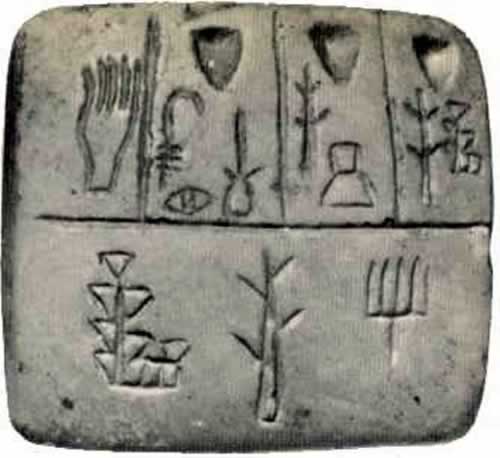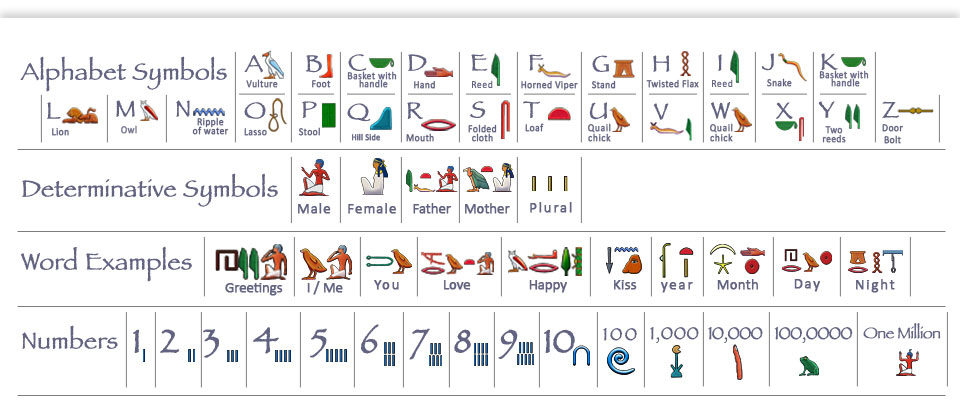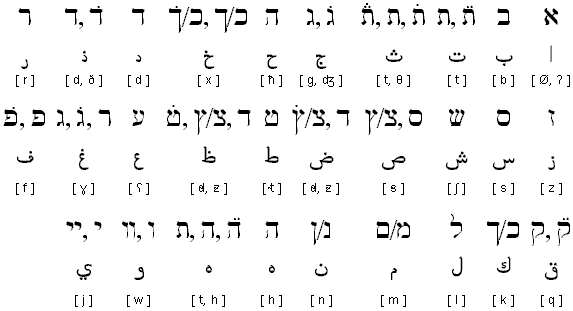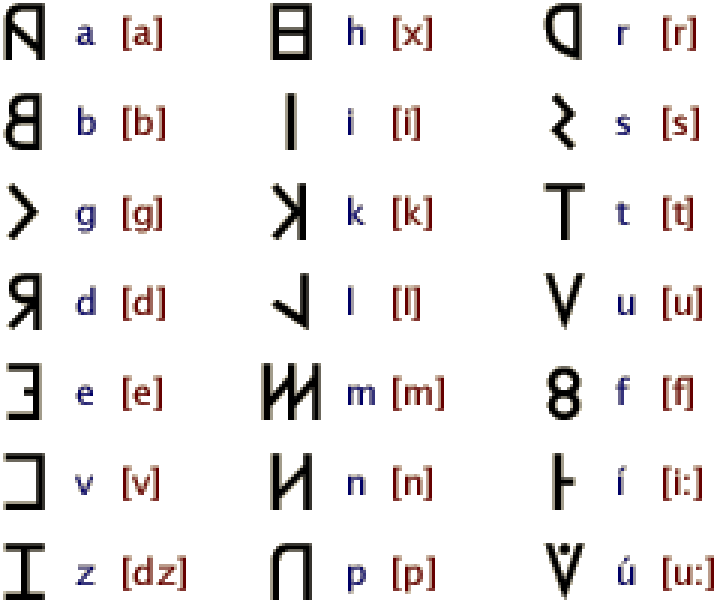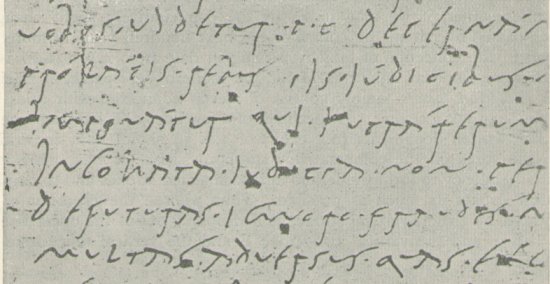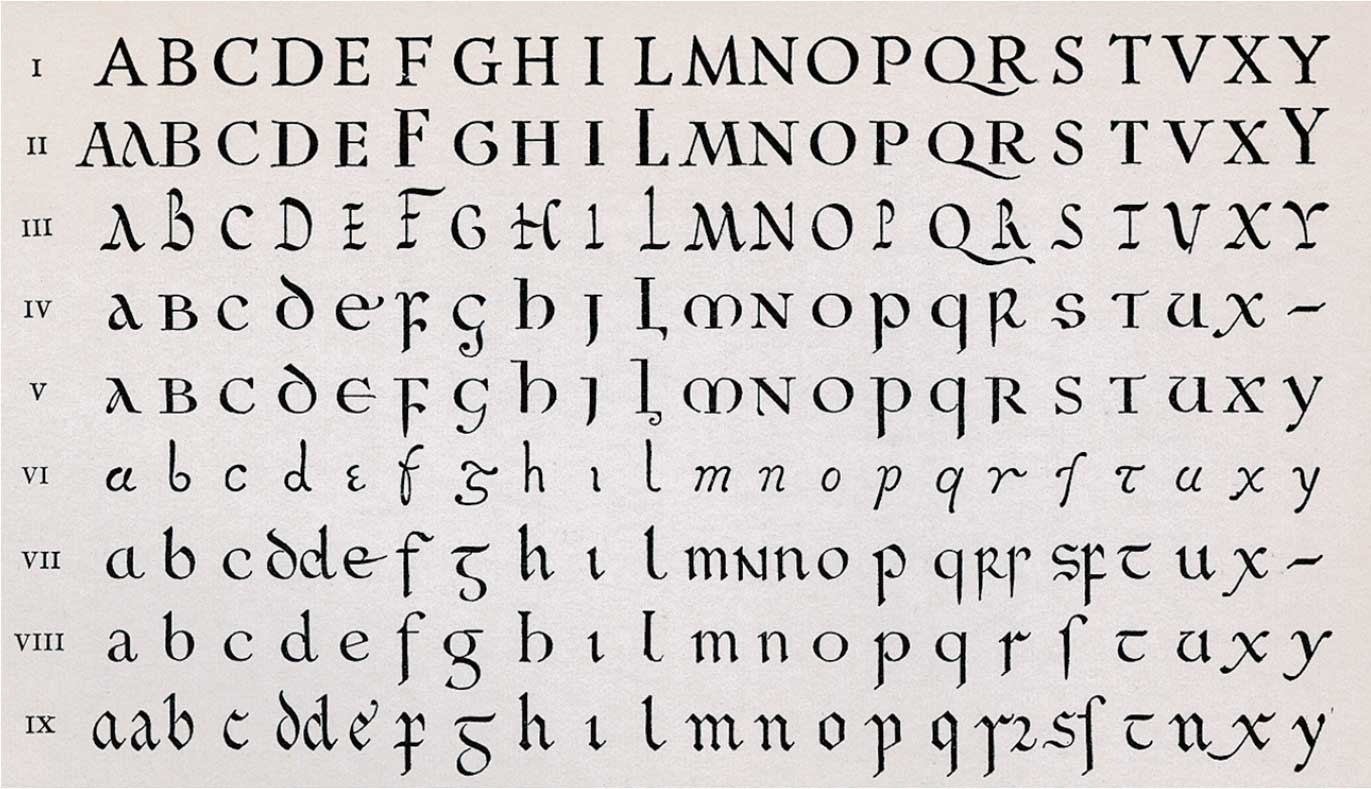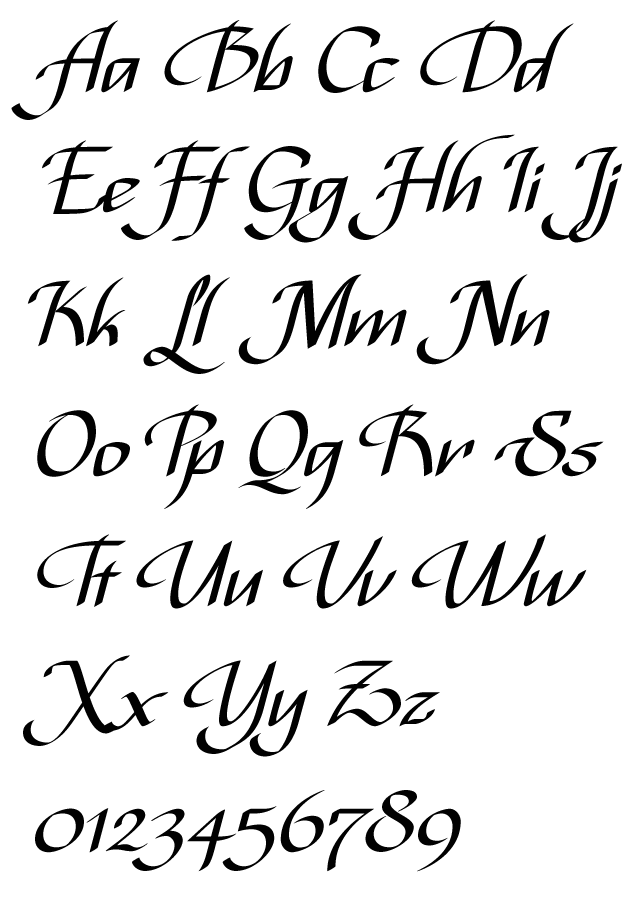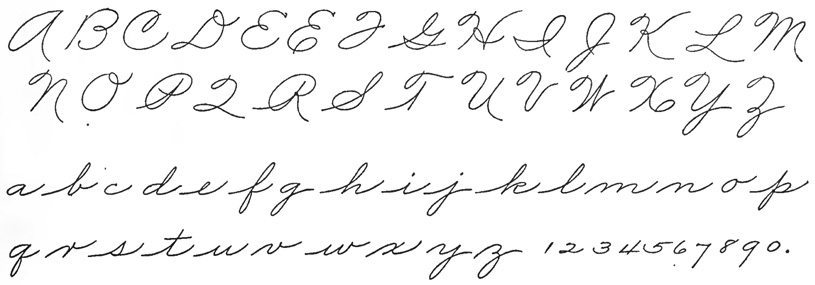The earliest known example of writing is the Sumerian pictographic system found on clay tablets, which developed around 3200 BC into a modified version called cuneiform. Cuneiform is from the Latin word meaning “wedge-shaped” and was impressed on wet clay with a sharpened reed.
Sumerian pictographic tablet 3100 BCE clay tablet
The Egyptian system of hieroglyphics also begin about this time using a system of syllabic writing. Two cursive scripts were created shortly after hieroglyphs were invented. Scribes wrote these scripts on papyrus, with ink using a reed pen.
the hieroglyphic typewriter
The Phoenicians developed a vowel-less system of 22 letters around the eleventh century BC. This is the first know alphabetical system of writing.
Phoenician alphabet
The Greeks adapted the Phoenician alphabet around the eighth century BC. They added vowels, dropped some consonants, and changed the order. The used all capital letters. Classical Greek lowercase letters were not invented until the Middle Ages.
ancient Greek alphabet
The Phoenician alphabet also influenced the Hebrew and Aramaic scripts, which follow a vowel-less system. One Hebrew script was only used for religious literature. Square Hebrew script, used in Israel, was developed from Aramaic around the third century AD.
Judeo-Arabic script
The Romans in Southern Italy eventually adopted the Greek alphabet as modified by the Etruscans to develop Latin writing. Like the Greeks, the Romans employed stone, metal, clay, and papyrus as writing surfaces.
traditional Roman
Roman cursive or informal handwriting started out as a derivative of the capital letters, though the tendency to write quickly and efficiently made the letters less precise.
cursive handwriting from the reign of Claudius (41 to 54 AD)
By the fifth century A.D. it included early versions of lowercase letters and sometimes flowed like modern cursive. Late in the eighth century Charlemagne tasked an English monk with standardizing the system. Influenced by Roman characters, Carolingian miniscule was designed for maximum legibility and featured lowercase letters, word separation and punctuation.
Carolingian minuscule
Gothic or black-letter script evolved from Carolingian, became the dominant handwriting from the twelfth century. This script was narrower, darker, and denser. The dot above the i was added to differentiate it from the similar pen strokes of the n, m, and u. Also, the letter u was created as separate from the v, which had previously been used for both sounds. Part of the reason for such compact handwriting was to save space, since parchment was expensive. Gothic script, being the writing style of scribes in Germany when Gutenberg invented movable type, became the model for the first type face.
Gothic / black-letter script
As the price of parchment and demand for books soared in the later Middle Ages, a denser style of writing evolved for European languages. Johannes Gutenberg used this Gothic approach for his printing press in the mid-15th century. Italian humanists soon revolted against the heavy look by reverting to a more Carolingian script and inventing a cursive form of it, known as Italic. Elegant handwriting emerged as a status symbol, and by the 1700s penmanship schools had begun educating generations of master scribes.
Italic chancery calligraphy script
During the United States’ infancy, professional penmen were responsible for copying official documents, including the Declaration of Independence and the Constitution. Signature handwriting styles became associated with various professions and social ranks. Women and men were also expected to embrace a style unique to their sex.
American cursive
American cursive was the handwriting style that David was a master at. He wrote many beautiful written letters for other soldiers that could not write themself.
>>to return to previous page – right click on back arrow <<
Word count: 596
